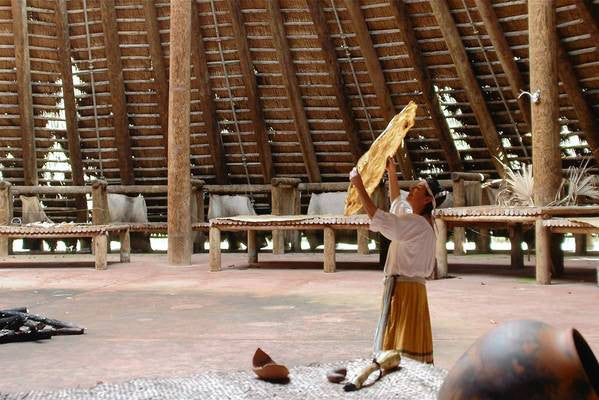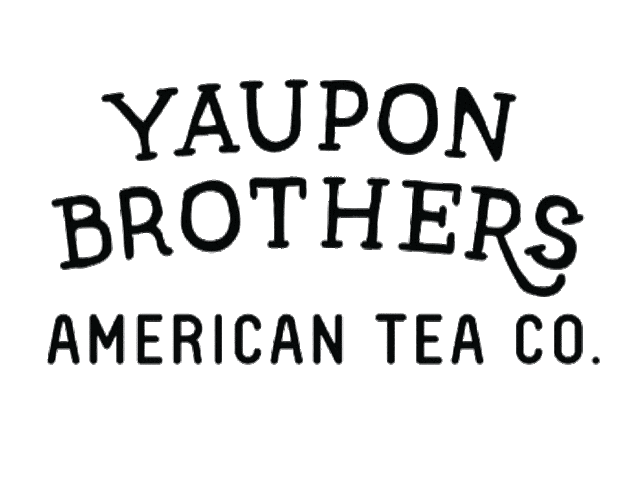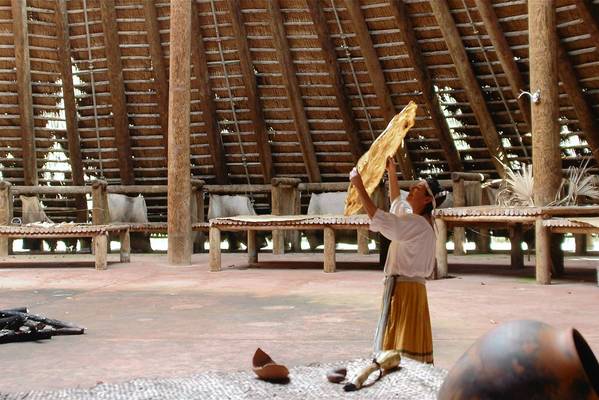
That's some cup of tea: Strong, black brew boasts rich history in Florida
I drink too much coffee. And I make it strong. It's so strong that members of my family have been known to take a sip and tactfully slip around the corner to the popular shop sometimes known as "Charbucks" in search of a kinder brew.
So perhaps my coffee addiction explains my excitement at recently tasting some real Florida caffeine: not coffee but the yaupon holly tea that Native Americans called "the black drink."
Actually, the name of Florida's most famous Native American, Osceola, is an Anglicized version of "Asi-yaholo," which meant something like "Black Drink Crier." The "asi" is the part that meant the drink.
The Spanish called the tea cassina, and residents at Tallahassee's Mission San Luis drank it more than a hundred years before Osceola's time, and before the native people known as Seminoles moved south into Florida.
No 'primitive outpost'
San Luis was a big deal in early Florida. In the late 1600s, more than 1,400 Apalachee Indians and Spaniards lived there in a two-culture community.
It began about 1633, as one of the more than 100 mission settlements established in Spanish Florida between the 1560s and the 1690s.
Today, you can find the entrance to Mission San Luis in our capital, just a few blocks from the Florida State University campus, where Tennessee Street crosses Ocala Road.
It's an archaeological site and living-history museum where impressive reconstructions of long-ago structures help explode "the popular belief that all Florida missions were simply primitive outposts," to quote its website, missionsanluis.org.
That statement was about the reconstruction of the Spanish church at San Luis — it's great — but what really knocked my socks off was the Apalachee council house, a re-creation of one of the largest historic Indian structures in the southeastern United States.
Built of wood and palm thatch, the council house is 120 feet in diameter and 100 feet tall, dimensions based on solid archaeological evidence. It could accommodate as many as 3,000 people.
There's nothing like a concrete, physical structure to bring home the reality of the civilization that created it — its sophistication, abilities and organization.
A serious beverage
Apalachee rulers used the council house to discuss community business and to gather their people for significant ceremonies — dances, rituals and preparations for war — in which the black drink played an important role.
This cup of tea was a serious business. It could only be brewed and served in the Apalachee council house, unless the chief gave special permission.
Other Florida Indian groups, including the Timucuans and the later Seminoles, also took the beverage seriously — which explains why it was an honor to be named Black Drink Crier; it didn't just refer to a guy who poured a mean caffeine drink, Osceola as barista.
Made from the roasted leaves and twigs of the yaupon holly, asi or cassina was full of caffeine. During purification rituals, Apalachee men drank it hot and strong, sometimes on an empty stomach, and they drank a lot of it quickly. They chugged it. The Latin name for the plant is Ilex vomitoria, so you can guess the result.
The sample I tasted during a recent visit to Mission San Luis was cool, though, sort of like ice tea, and quite pleasant.
In colonial times, the black drink was not always consumed in its atomic, ritual strength, and had a following among the Spanish. The Mission San Luis visitor guide tells the story of a friar who once stormed into the council house. In the grip of the 17th-century version of coffee nerves, he threw a bit of a tantrum "because he was not given his black drink on time."
When the Apalachee men weren't at war, they used their own caffeine-fueled powers to participate in a ball game that was "an integral part of native life," according to the visitor guide.
"The game involved 50 or more players and was quite violent. . . . Superior ball players became pampered celebrities in their villages, much like athletic stars today."


